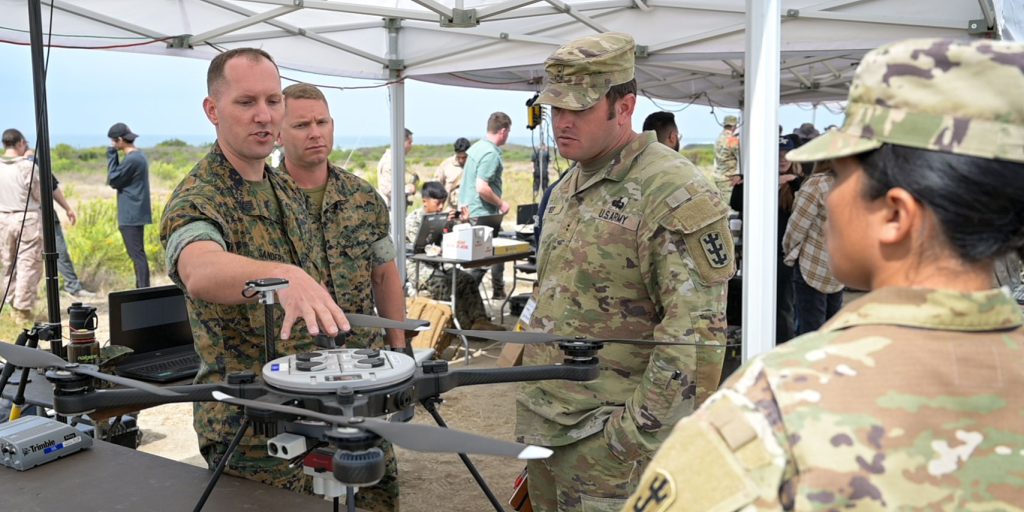ARLINGTON, Va.—As rolling waves pounded the beach, the operator deftly maneuvered joysticks on a handheld controller, causing the uncrewed aerial vehicle (UAV) a few feet away to ascend and arc gracefully over the Pacific Ocean.
While airborne, the specially designed UAV used sophisticated sensors and software to spot obstacles and potential hazards under the water and sand — all of which appeared on a tablet carried by a second operator standing on the beach.
For the next phase of its performance, the UAV descended to just above the water’s surface and slowly submerged its entire body, gathering even more detailed information about the surf zone before rising again and flying to a designated landing site nearby. It was an impressive display of the use of emergent technologies to gain greater knowledge of the surf zone environment to support Marine Corps amphibious operations.


